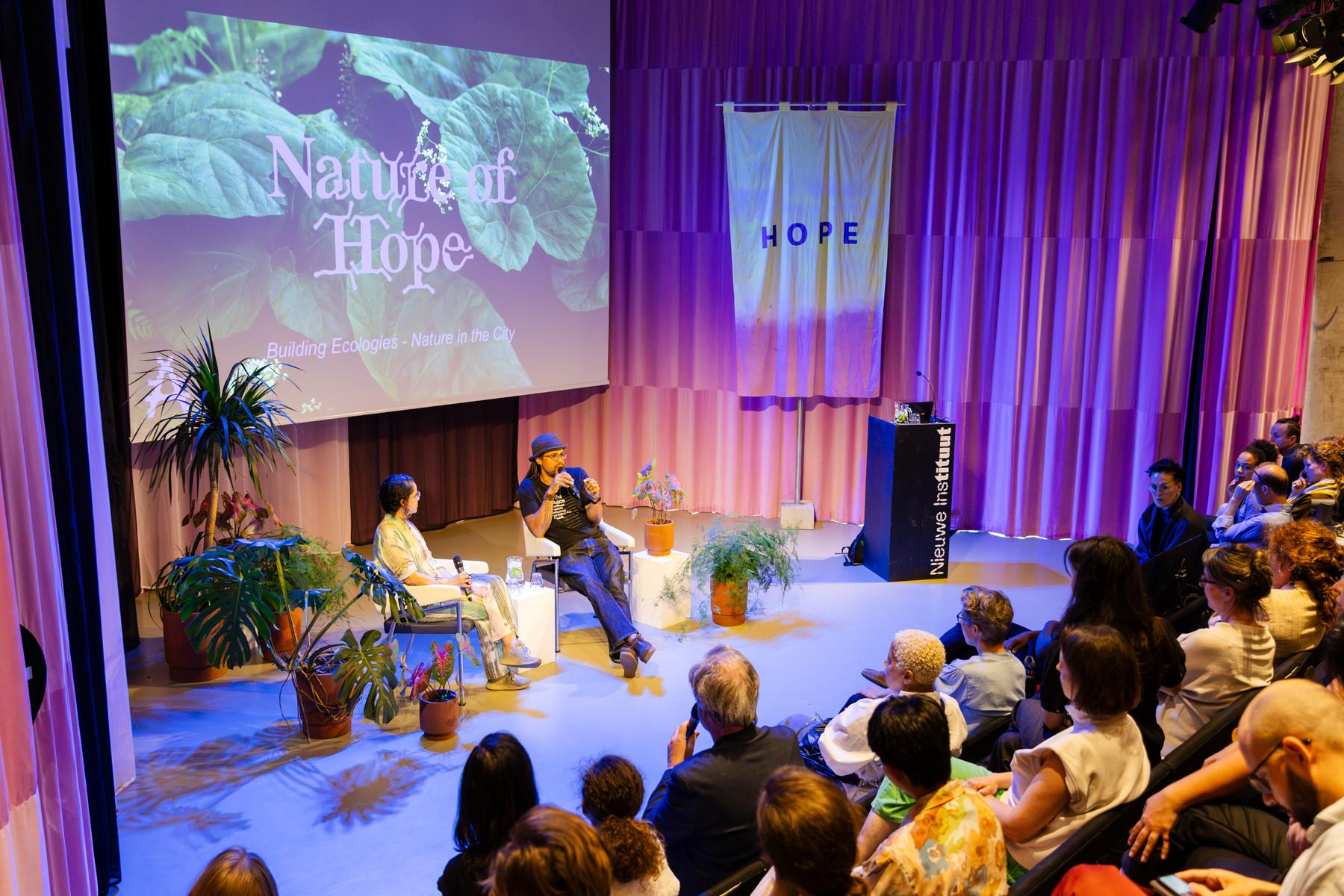Exploring Urban Environments from a Bird’s Perspective, Nature-Inclusive Design, and the Excursion by Vogelbescherming, Bureau Stadsnatuur and IABR.
In the quest for a sustainable future, integrating nature into our urban environments has become a crucial focus for architects, urban planners, and environmental organizations. The upcoming knowledge session and digital excursion on September 18, co-organized by Vogelbescherming Nederland, Bureau Stadsnatuur, and IABR, aims to explore how we can design cities that support both human life and the natural world. We spoke with expert Merel Roks from Vogelbescherming Nederland, who shared her perspective on the importance of nature-inclusive design and the upcoming excursion.
The importance of urban biodiversity
Urban areas are often seen as concrete jungles, with little space for nature. However, what many people don’t know or expect is that cities actually have enormous potential to become vibrant ecosystems that support a wide range of plant and animal species, including birds. There’s a common misconception that birds and other animals only belong in natural areas, but this is far from true. Despite the abundance of concrete, certain species thrive in cities. If you pay close attention, you’ll notice just how many different bird species are flying around. As Merel Roks explains, "Birds are an indicator of how well our environment is doing. They are always looking for a place to build a nest, find shelter from predators, and locate food. If you see birds in your city, it means they have found a good environment. But if they suddenly disappear, it indicates that the habitat is no longer suitable."
How birds live in urban environments
During the excursion, participants will be introduced to the habitats of various bird species, not just in visions for the future, but also in the ways birds already inhabit urban spaces. Birds see skyscrapers as cliffs, parks as open fields, and city streets as places to hunt for prey. They don’t see boundaries or structures as we do—they simply translate these into their survival-oriented view of the environment. In Rotterdam, for instance, high buildings have become habitats for species that naturally prefer high vantage points. "The peregrine falcon, for example, enjoys living on tall buildings in Rotterdam, just as they would on cliffs in nature," Roks explains.
Roks emphasizes that by understanding how birds perceive the city, we can better incorporate their needs into urban design. "Each species has specific needs, and it’s fascinating to show architecture professionals how birds experience the city and its buildings because they can easily integrate this into their work. If we consider how a bird experiences the city, we can incorporate that into our architectural designs from the drawing board, ensuring that necessary shelter and food are available," she says. This approach can lead to more sustainable urban environments that benefit both humans and animals.
Shaping the future
The idea of designing for birds is not just theoretical or visionary. Nature-inclusive projects are being successfully implemented in cities around the world, offering a blueprint for how we can build more resilient and ecologically balanced urban environments. This is the goal of the excursion organized by Vogelbescherming, Bureau Stadsnatuur, and IABR: to inspire future designers and planners to use nature-inclusive building techniques—designs that are in harmony with the environment for both humans and animals.
André van Stadsnatuur echoes this sentiment: "Sometimes, hostile design is unintentionally created. Large reflective glass complexes and light pollution, for example, are very disorienting for birds, especially at night. Cities are primarily designed for humans, not for birds. How can we ease the conflict between humans and animals so that we can live in greater harmony? That is the question for the future."
Roks sees great potential in nature-inclusive design methods: "There are many opportunities to creatively combine biodiversity and ecology with the design and layout of our environment, not just for humans but also for birds, better preparing cities for the challenges of climate change. We’ve previously collaborated with IABR on the award for Nature-Inclusive Building & Design."
The excursion
Curious to learn more? We invite you to join the excursion on September 18 during the Knowledge Session and digital excursion organized by Vogelbescherming Nederland, Bureau Stadsnatuur, and IABR. The excursion offers a unique experience that combines learning with exploration: with experts from various disciplines, from (landscape) architects to ecologists, we will explore ways to promote biodiversity in the built environment, encourage biobased construction, and improve bird habitats in our cities. The excursion will be conducted in Dutch. Check the IABR program for more information on tickets and other events this month.
Participants can also use an app that guides them on a walking or cycling route, with each stop along the way offering a story about the relationship between architecture and birds. The app’s content is saved so you can revisit the information at any time.




